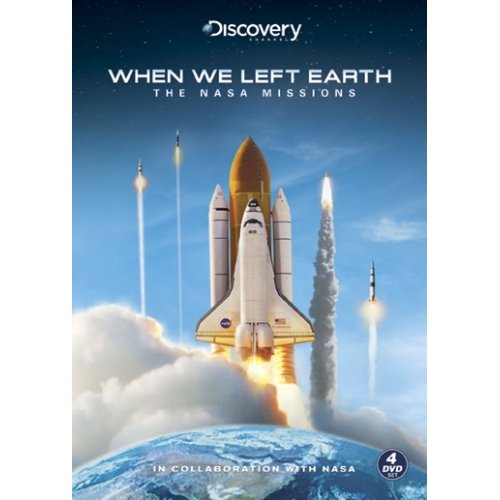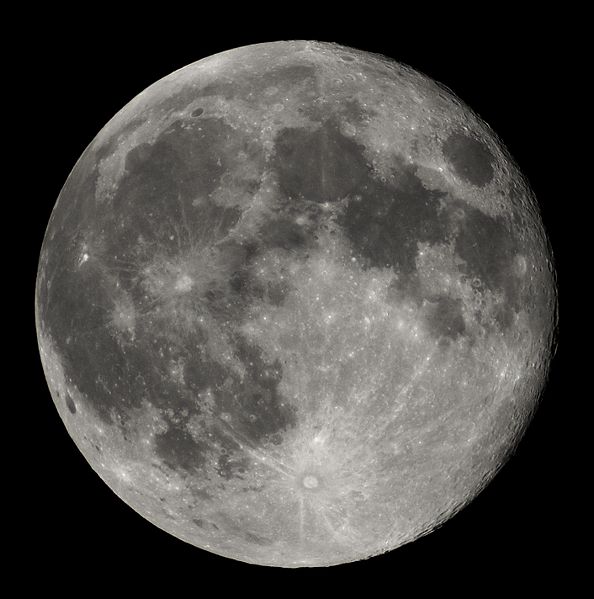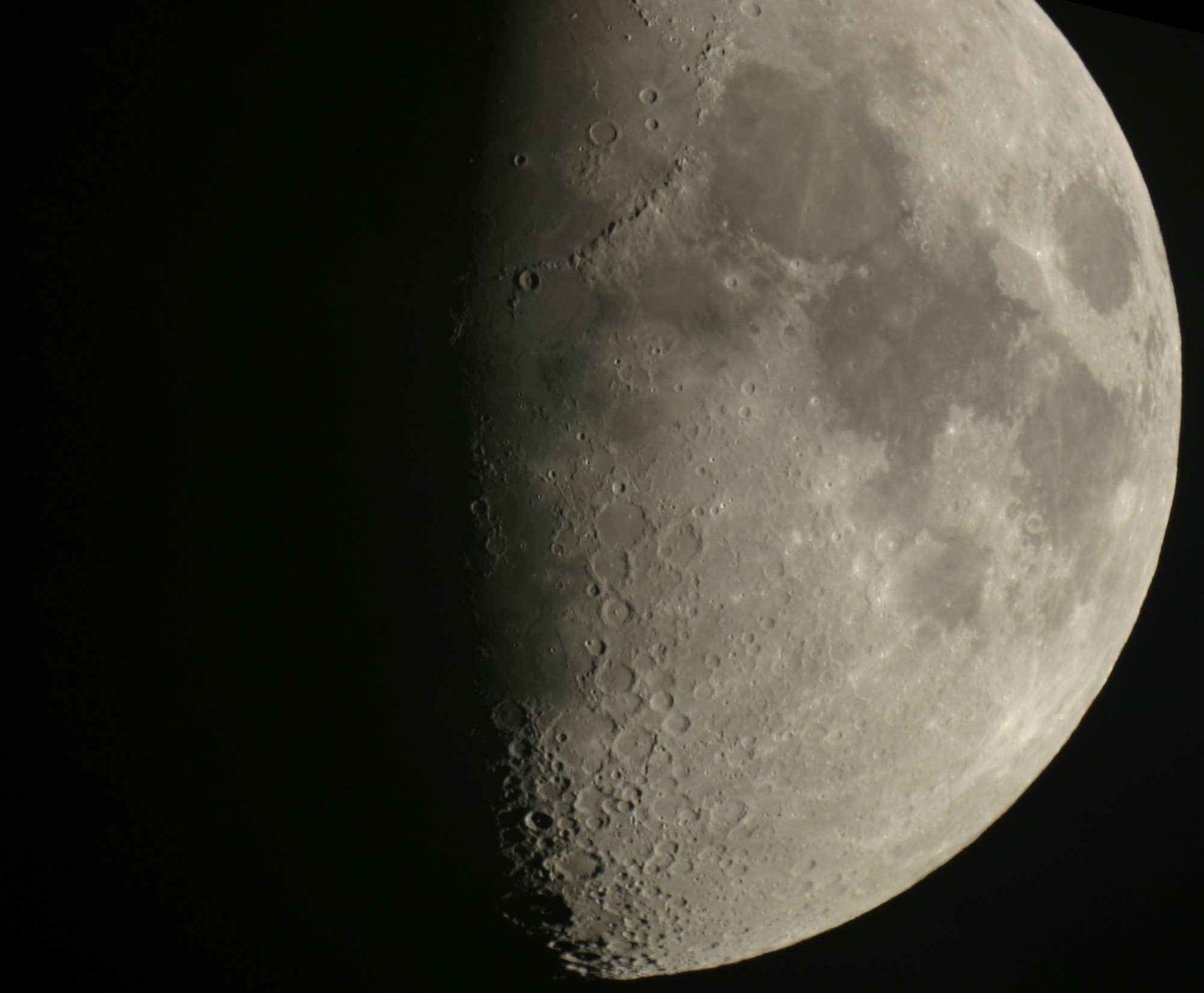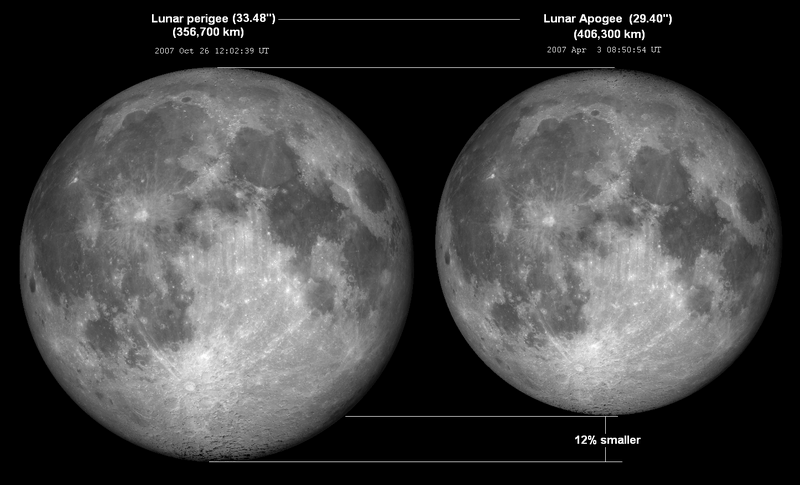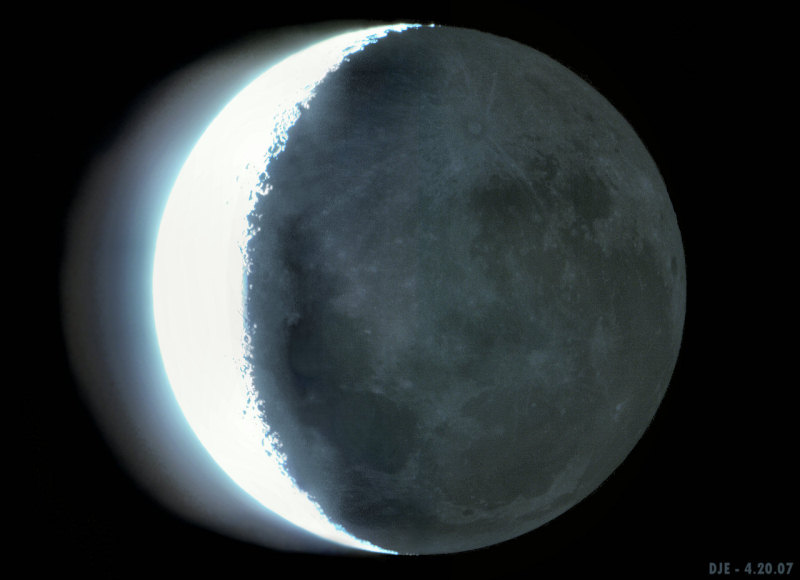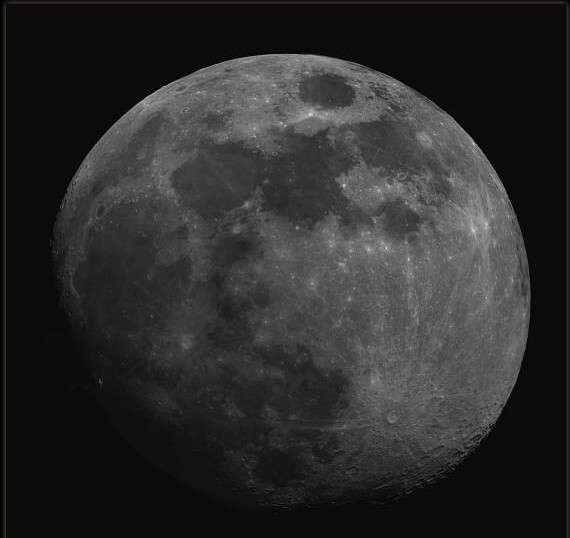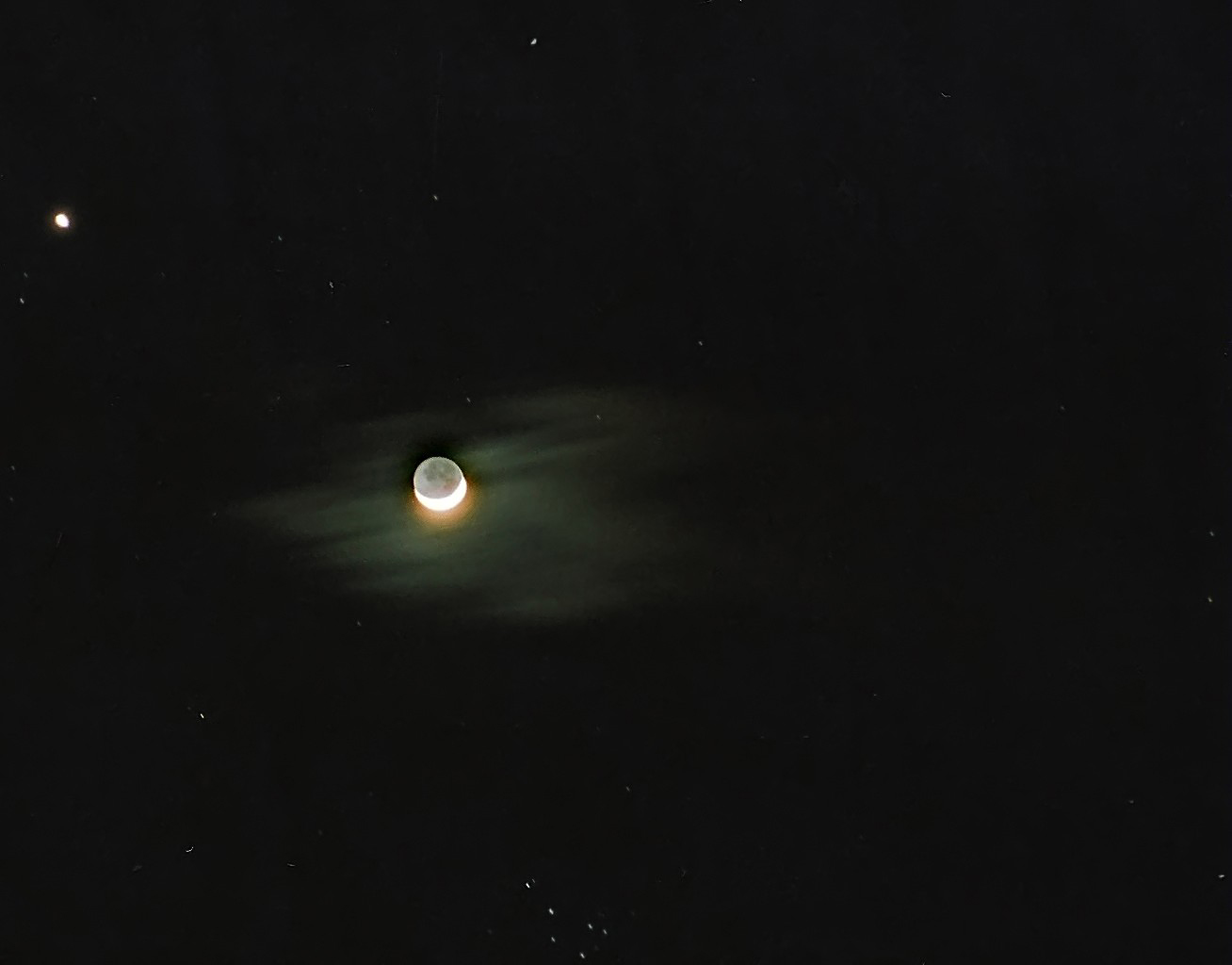[/caption]
A new moon occurs when the Earth, Sun and Moon are lined up so that the Moon is directly in between the Earth and the Sun. From this perspective, the side of the Moon covered in sunlight is turned away from the Earth, and the face we see is in shadow. The Moon takes approximately 29 days to complete the cycle from new moon to full moon and then back to new moon again. During a new moon, the Moon is in conjunction with the Sun, as seen from Earth.
Astronomers call it a “new moon”, because shortly after the Moon is completely shadowed, a think crescent peeks out from one side. This is the beginning of the Moon’s rise to brightness over the next 2 weeks. The exact time this occurs depends on your geography on Earth, but it will always occur in the Western horizon between sunset and moonset.
The orbit of the Moon isn’t exactly lined up the the orbital plane of the Sun and the planets, so it doesn’t actually get exactly between the Earth and the Sun. When this exact line does happen, the new moon is seen as a solar eclipse, darkening the Sun by various amounts depending on your position on the Earth.
We’ve got a list of all the new moons for the next few years. Here’s a list for 2008, 2009, 2010, 2011 and 2012.
Want to know every Moon phase for the next 6000 years? Here’s a handy chart from NASA, and here’s a cool image of a new crescent moon from Astronomy Picture of the Day.
You can listen to a very interesting podcast about the formation of the Moon from Astronomy Cast, Episode 17: Where Did the Moon Come From?


